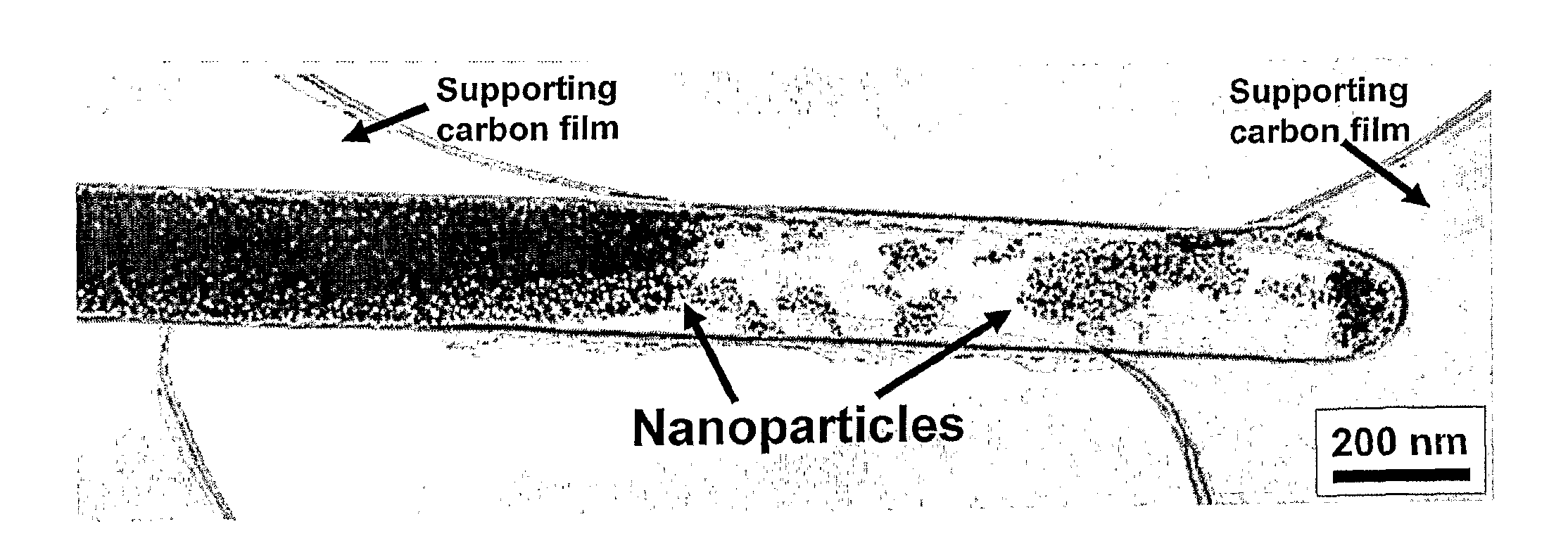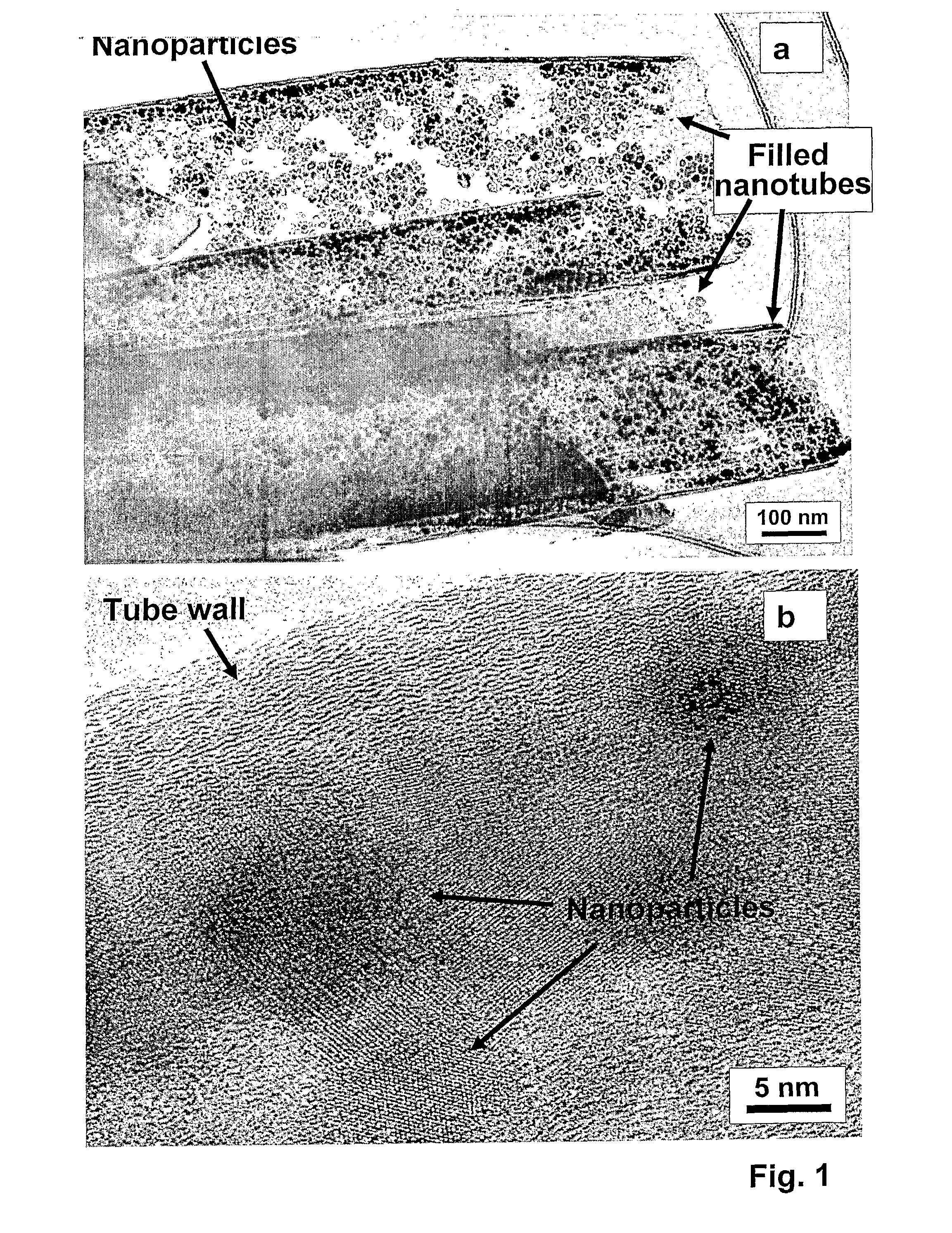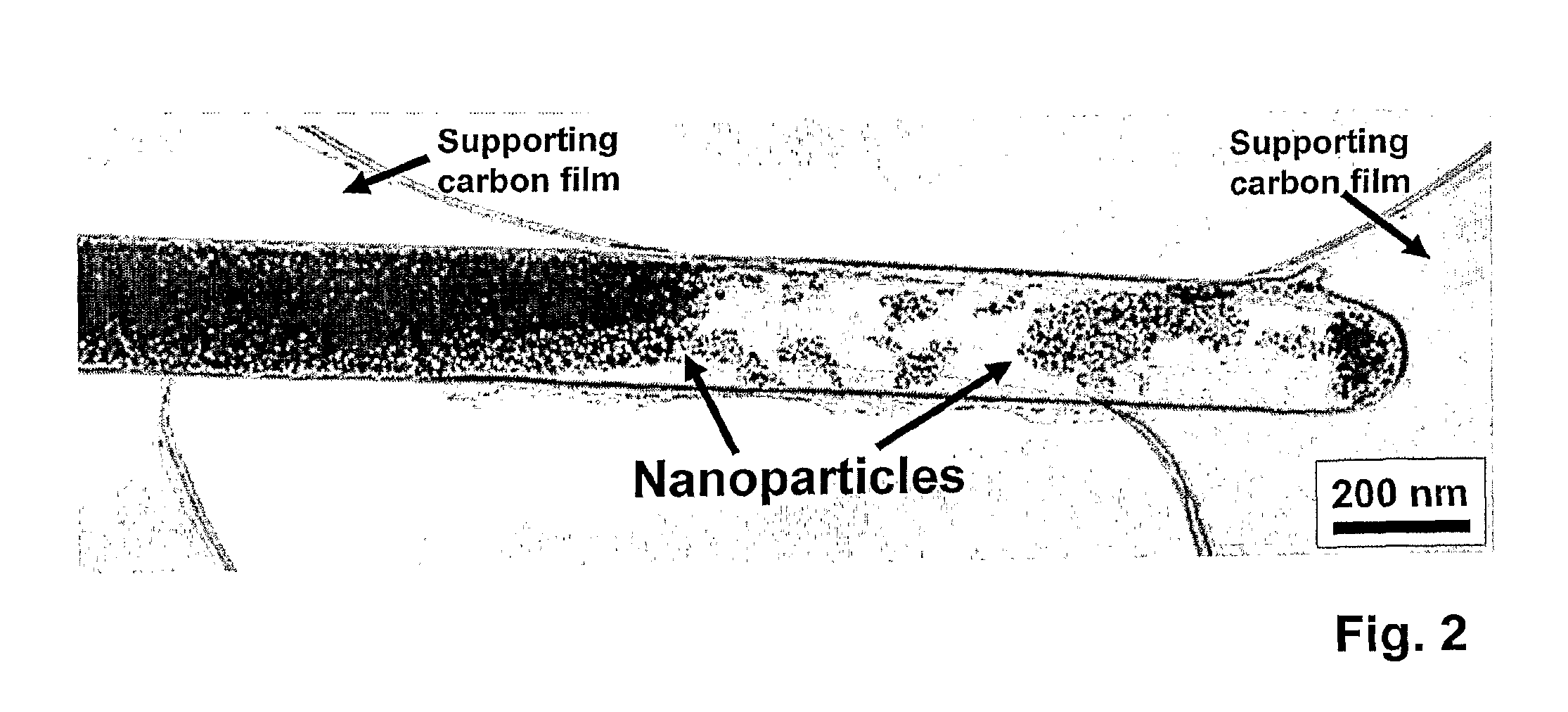Functional nanoparticle filled carbon nanotubes and methods of their production
a carbon nanotube and nanoparticle technology, applied in the field of carbon nanotubes (cnts), can solve the problems of inability to control the amount and location of magnetic material inside the tube, the inability to use the magnetic properties of nanotubes with magnetic particles imbedded into cnts during synthesis, and the limited success of previous attempts
- Summary
- Abstract
- Description
- Claims
- Application Information
AI Technical Summary
Problems solved by technology
Method used
Image
Examples
example 1
Synthesis of CNTs
[0037]All experiments were performed with carbon nanotubes produced by the chemical vapor deposition (CVD) technique. The nanotubes were formed in the straight cylindrical pores connecting both faces of a template comprising an alumina membrane. The alumina membrane template comprised an Anodisc of 13 mm in diameter purchased from WhatmanR. The pore diameter and thickness of the membrane determine the dimensions of the nanotubes. For experiments described herein, the pore size was 300 nm on average, and the membrane thickness was 60 μm. The synthesis of CNT by CVD is described in detail by Bradley et al. (Chemistry Preprint Archive 2002 237-242). The resulting CNTs have open ends from one or both sides, and their walls are highly disordered and hydrophilic to allow water to invade the tubes (Rossi et al. Nano Letters 2004 4:989-993; Naguib et al. Abstract of Papers of the American Chemical Society, Annual meeting 2003 226:U535; Ye et al. Nanotechnology 2004 15:232-2...
PUM
| Property | Measurement | Unit |
|---|---|---|
| Metallic bond | aaaaa | aaaaa |
| Magnetism | aaaaa | aaaaa |
| Biodegradability | aaaaa | aaaaa |
Abstract
Description
Claims
Application Information
 Login to View More
Login to View More - R&D
- Intellectual Property
- Life Sciences
- Materials
- Tech Scout
- Unparalleled Data Quality
- Higher Quality Content
- 60% Fewer Hallucinations
Browse by: Latest US Patents, China's latest patents, Technical Efficacy Thesaurus, Application Domain, Technology Topic, Popular Technical Reports.
© 2025 PatSnap. All rights reserved.Legal|Privacy policy|Modern Slavery Act Transparency Statement|Sitemap|About US| Contact US: help@patsnap.com



